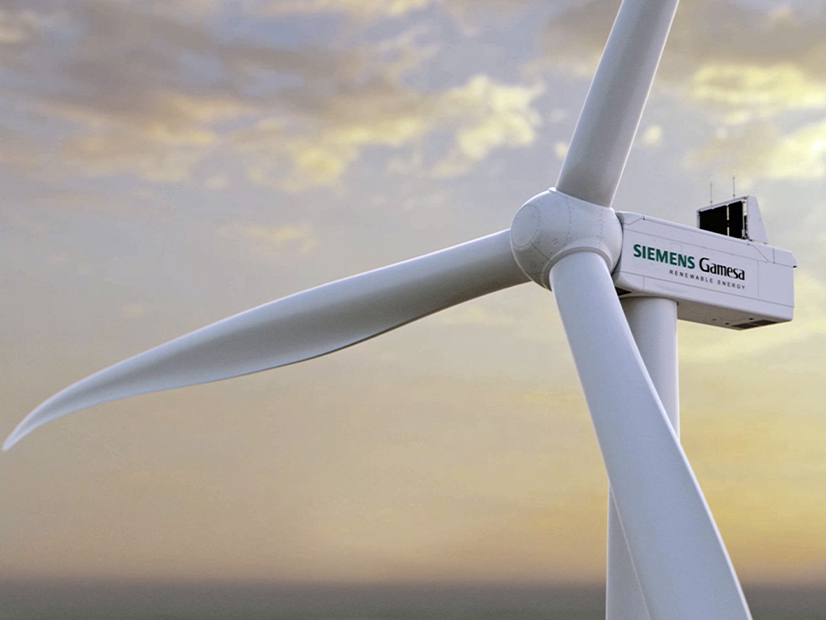
Siemens Energy said last week that quality-control problems with components of certain Siemens Gamesa onshore wind turbines are worse than previously believed.
The parent company on Thursday withdrew its profit guidance for fiscal year 2023 and said costs incurred correcting the situation will likely exceed a billion euros.
“The fact that we have identified more quality problems marks a significant setback for us,” Siemens Energy CEO Christian Bruch told financial analysts in a conference call Friday. “This setback is more severe than I thought possible.”
The revenue guidance issued May 15 — calling for a 10 to 12% increase over fiscal 2022 — remains in place.
Siemens Energy stock tanked in subsequent trading, closing 37.3% lower Friday on the Xetra market.
Siemens Gamesa is a leading company in the wind power industry, with more than 130 GW of nameplate capacity installed worldwide. Its 11 GW offshore turbines will equip what is likely to be the first utility-scale wind project to come online in U.S. waters: South Fork Wind.
But it has seen a rising defect rate in its wind power products, as have competitors General Electric and Vestas.
During Friday’s call, Bruch said the problems appear to be concentrated in select components and with a few important suppliers. The billion-euro price tag, he said, is only an initial assessment and does not include mitigation measures.
Bruch touched on other problems in the company’s wind power product line: Productivity is not improving as expected, and challenges persist in the offshore wind manufacturing ramp-up.
Corporate culture at Siemens Gamesa also is a problem, Bruch said: “Too much has been swept under the carpet.”
He said Siemens Energy will soon own 100% of Siemens Gamesa, which will aid its efforts to put the house in order, but Siemens Gamesa will incur heavy losses this year.
Further analysis is needed to fully understand the extent of the problems and their repercussions, Bruch said, and he expects to provide more details no later than Aug. 7, when the third-quarter financial report is due.
But he and Siemens Gamesa’s new CEO, Jochen Eickholt, were able to offer additional information during their Q&A with analysts Friday.
Bruch said some of the problems — such as degradation from increased vibration — will not manifest immediately, which makes it hard to calculate their eventual cost and impact.
“Some of the components show perhaps different behaviors over lifetime, and the lifetime sometimes extends 25 years,” Eickholt said. “In the end of the day, what’s going to happen in the next 20 years is not so easy to predict.”
The problems are mostly occurring in recent installations, Eickholt said, so the challenge is to model the lifetime of similar units using data from a limited number of failures.
Early results show a 15% to 30% failure rate, he said, but the company is trying to refine that estimate through better modeling.
One analyst asked why the profit guidance was issued in mid-May if it was going to be recalled only five weeks later: “What exactly are we dealing with in terms of culture here, and how confident are you that you have nothing else swept under the carpet?”
The failure rates have been increasing recently, Bruch said, and his understanding of the situation has evolved in that brief time.
“I would not relate this to five weeks ago.”
Another analyst said the industry’s earlier race-to-the-bottom strategy appears to be the basis of the quality-control problems being seen, and asked how the company could be sure this would not repeat as new products are launched and new suppliers qualified.
The practices of the past are not the basis for running the company today, Bruch said, yet it must cope with this legacy while building its future.
“That is something that is super-painful today, but it is not to be extrapolated going forward to say, that is the logic of the industry,” he said.
Friday’s call focused on the onshore product line, but the same problems have had an “absolutely disappointing” impact on the installed offshore fleet, Bruch said.
An analyst asked about the potential financial ramifications of this, as offshore turbines are much larger and much harder logistically to work with than their onshore cousins.
Bruch did not directly answer the question, saying instead that ramping up any industry sector comes with its challenges. (See Big Offshore Wind Plans Face Multiple Major Obstacles.)
He did say there needs to be “proper risk and reward balance in your business models” to help drive the energy transition and that Eickholt has been vocal about this.
The company will be selective about the projects it takes on, Bruch said, and that is reflected in the order intake.



